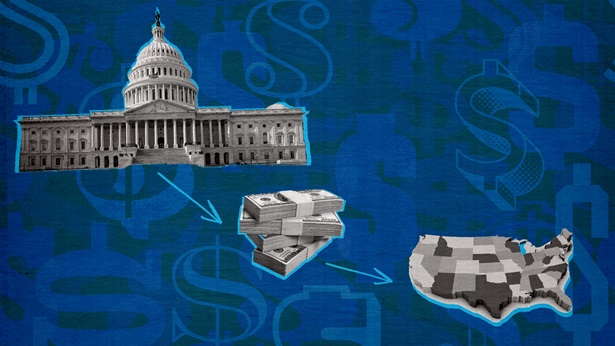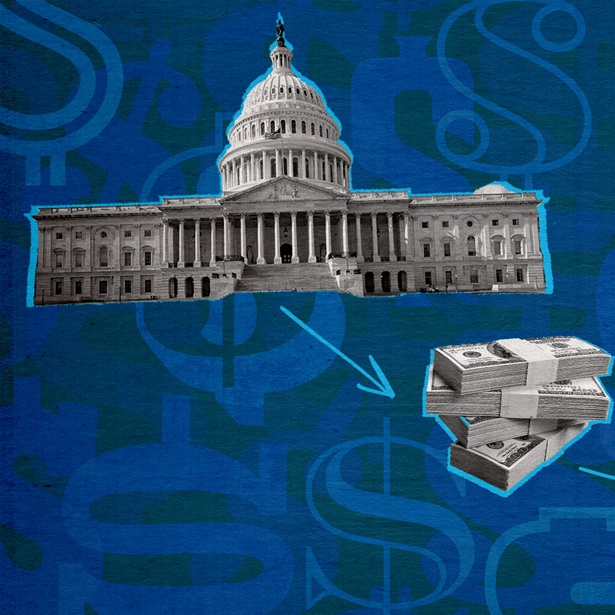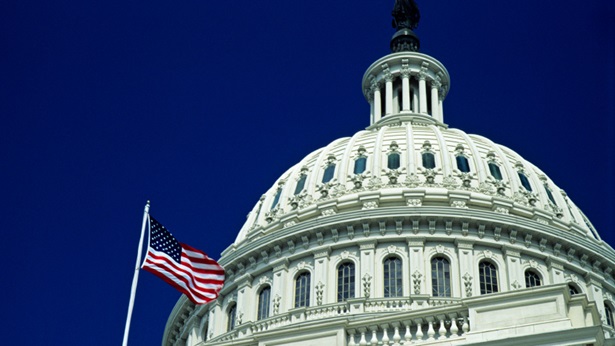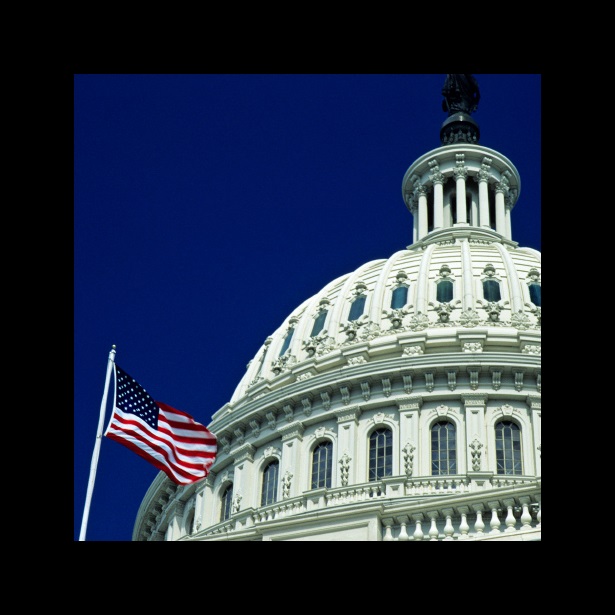What Happens When States No Longer Have Federal Pandemic Child Care Dollars?
Planning around use of one-time funds helps with program and budget stability

As part of the historic infusion of assistance to states during the COVID-19 pandemic, the federal government provided almost $53 billion in one-time funding for the child care industry. This support was distributed to states through Child Care and Development Block Grants and Child Care Stabilization Grants, funded over the course of three COVID-19 relief packages.
Child Care Stabilization Grants worth a total of $24 billion—the entire program—and $13.5 billion in Child Care and Development Block Grants expired in September 2023. An additional $15 billion in the child care block grants will expire this September. Although this funding proved effective at supporting the availability of child care, the one-time nature of the money, coupled with the ongoing needs of child care services, has created a potential fiscal cliff for states to navigate as funding expires. How can state policymakers limit the potential risks of such sudden drops in funding?

Dramatic funding drops could mean fiscal or operational struggles for states
The public health emergency and economic recession during the COVID-19 pandemic exacerbated issues that child care providers were already facing, including high demand for their services, a shortage of workers, and rising costs. In the first year of the pandemic, analysts estimated that nearly 10% of the nation’s licensed child care programs closed permanently or temporarily.
Lawmakers supplied nearly $53 billion in federal aid to the sector to help states combat the challenges in the child care sector. The effect of the funding was significant; more than 80% of child care providers nationwide received funding. Child care facilities used these dollars in a number of ways: for operational expenses, such as wages and rent; and one-time investments, such as the purchase of program materials, facility improvements, and payments on debt taken on during the pandemic. This funding allowed child care providers to continue providing services: 92% of stabilization grant recipients said that funds helped them stay open.
As a result of the funds expiring, many child care centers may need to take measures such as raising fees or pulling back operations. Last year, The Century Foundation, a think tank that examines education, health care, and workforce policy challenges, found that roughly one-third of centers that received Child Care Stabilization funds could shut down with consequences for parents, children, providers, and the economy, with an estimated cost to families of $9 billion in reduced earnings and cost to states of $10.6 billion in decreased economic activity annually.
How states managed pandemic child care funds
A Pew report issued last December provided recommendations for how states more broadly can reduce their exposure to fiscal risks when spending one-time federal aid. Among the potential approaches are spending the funds on one-time needs, identifying alternate funding sources for when federal aid expires, or planning for a wind-down of the program receiving aid once the funding runs its course.
These strategies are also relevant for states’ effective management of temporary child care funding. Some states are already thinking about how to tackle funding these activities into the future.
Using temporary funding as a one-time stopgap
When one-time funds expire, states can use other one-time funds as a stopgap to make responsible longer-term fiscal plans. For example, Wisconsin in October 2023 initiated a stopgap measure to continue its Child Care Stabilization program, directing $170 million to provide financial relief to child care providers. The measure shifts one-time pandemic reimbursements from the Federal Emergency Management Agency to fund the Child Care Counts Stabilization Payment Program through June 2025. In a statement, Governor Tony Evers (D) and his administration acknowledged that this is not a permanent solution and said that the administration will explore opportunities for long-term sustainability in the child care sector.
Identifying a new permanent funding source
One way to reduce the fiscal risk of spending one-time funds on operational expenses is to identify a new stream of permanent funding for the program. For example:
- New Mexico voters in 2022 approved a constitutional amendment to provide child care funding through revenue from non-renewable natural resources and returns on capital investment in the state’s Land Grant Permanent Fund. The amendment could provide about $150 million annually to make child care affordable for most families and provide child care centers with sufficient funding to offer competitive wages. This reliable source of funding should ensure that parents and child care providers don’t experience lapses in funding or services.
- Maine, meanwhile, used part of the Child Care Stabilization Grants, starting in 2022, to provide stipends to child care workers. As the federal funding began to wind down, the state granted more than $12 million in recurring general fund appropriations to enable subsidies to continue.
- In fiscal 2024, Illinois funded the first year of a proposed multiyear plan to invest in child care. The $250 million investment includes $130 million for early workforce compensation contracts aimed at increasing child care workers’ salaries and $75 million in additional funding for Early Childhood Block Grants to create more pre-K spots. Although this appropriation does not completely replace the nearly $800 million in federal money that the state received for its Child Care Stabilization program, the plan decreases the severity of a fiscal cliff.
Prioritizing one-time expenses and communicating end dates
Spending one-time money on one-time expenses prevents the risk of future fiscal obligations. States can better prepare recipients for the end of a program and encourage responsible spending by making clear the funding will expire. For example, Arkansas mitigated risk of a child care spending cliff with allocation decisions, according to an official from the Arkansas Department of Education. State leaders encouraged providers that received funding to apply it to one-time projects such as facility improvements or the purchase of educational materials. This helped ensure that recipients knew the funds were temporary and reduced the risk of a fiscal cliff.
The Child Care Stabilization Grants are just one example of how one-time funding streams can present challenges for states if service needs persist after funding expires. With pandemic aid expiring, states should assess the needs associated with operational activities funded by such one-time money. If acute needs persist—as is largely the case with child care funding—states can identify new funding streams. And if the needs no longer exist, policymakers can phase out of the activities and clearly communicate end dates.
Kate Watkins is an associate, Rebecca Thiess is a manager, and Laura Pontari is an associate manager with The Pew Charitable Trusts’ managing fiscal risks project.


America’s Overdose Crisis
Sign up for our five-email course explaining the overdose crisis in America, the state of treatment access, and ways to improve care
Sign up

Pandemic Aid: States Safeguarded Against Budget Challenges















